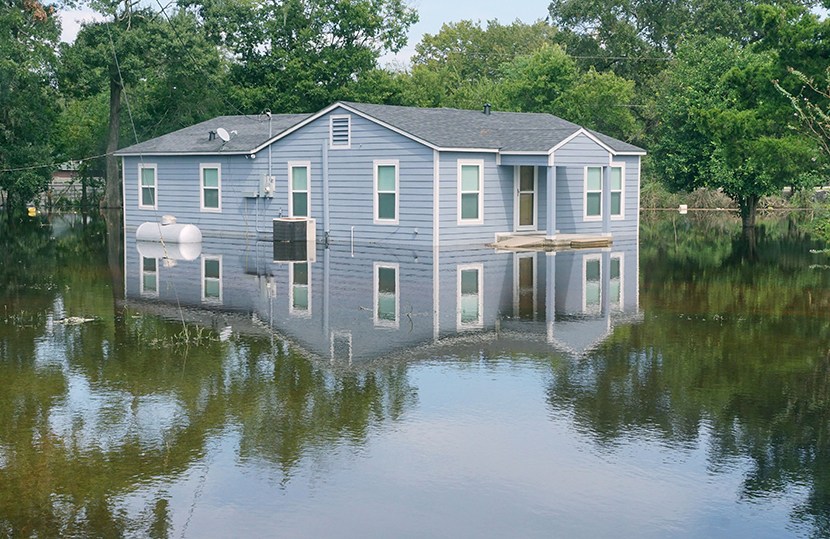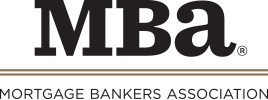
All in This Together: The Industry’s Approach to Disaster Relief

(A house flooded during Hurricane Harvey in August 2017. Image courtesy of IrinaK/shutterstock)
The past few years have seen seemingly endless headlines about natural disasters striking the United States–from hurricanes on the East and Gulf coasts to fires in the West and tornadoes on the Great Plains.
While weather and climate disasters have always been part of life, 2024 was deemed the fourth costliest on record by the National Oceanic and Atmospheric Administration’s National Centers for Environmental Information, with the cost totaling approximately $182.7 billion in damages–although NOAA acknowledged that the final figure may increase after adjustments and that the estimates encompass more than just residential buildings. 2024 currently trails only 2017 ($395.9 billion), 2005 ($268.5 billion) and 2022 ($183.6 billion).
Throughout the year, there were 27 individual weather and climate disasters with at least $1 billion in damages, behind only 2023’s record of 28 events.
And 2025 has thus far seen its fair share of catastrophe, such as a series of fires in the Los Angeles area. A Redfin analysis published in July estimated that $51.7 billion in homes in the city of Los Angeles alone were impacted largely by the Palisades fire. That figure includes 11,000 residential properties.
As of the time of publication, data was still being compiled on the July 4 weekend Central Texas flooding–the deadliest flash flood in the U.S. since 1976–but a Cotality estimate published July 21 projects $1.1 billion in damage to residential buildings.
What MBA Is Doing
With the mounting costs in mind–as well as confounding factors such as the rising expense and falling availability of home insurance in some heavily affected states–the Mortgage Bankers Association has been working to provide information to members across the industry about how to handle natural disasters.
One tentpole of MBA’s efforts is an evergreen resource paper, “Disaster Recovery: A Resource for Homeowners.” It compiles what homeowners should be doing before and after a natural disaster, as well as how to begin the recovery process and how to seek rebuilding assistance.
“We designed the guide to be evergreen and applicable to any type of natural disaster–hurricane, flood, wildfire or even volcanic activity. It’s a practical tool for homeowners, and includes information on options for borrowers who need help paying their mortgage, recovery and rebuilding resources and an explanation of the managed claims process for insurance proceeds,” recalled Sara Singhas, MBA Director of Strategic Industry Engagement and one of the resource guide’s authors.
The guide is circulated by MBA regularly and in anticipation of natural disasters; Singhas noted that when it was first released in 2017, it was also sent to state MBAs, governors’ offices and a number of other organizations to get the word out.
Moreover, MBA works with federal agencies or other related parties in an attempt to ease the process or provide as many resources as possible for members when a disaster does strike. “During a disaster, our members keep us informed about where they’re encountering challenges, and we work closely with the relevant agencies to ensure they can support affected borrowers quickly and effectively,” Singhas said.
MBA is involved in some of the tangential issues too. Singhas noted that a big issue with Hurricane Harvey specifically in 2017 was that significant damage occurred outside of the designated special flood hazard zone. “We’ve been collaborating with a broad coalition of stakeholders–including FEMA and major insurance providers–to shift the narrative around flood insurance and emphasize the importance of coverage even if a property is not located in a designated Special Flood Hazard Area,” she said.
Finally, MBA has a number of councils and committees that are relevant to disaster recovery for members who are interested in shaping the industry’s response and approach. Singhas pointed to the Residential Loan Production Committee and Residential Loan Administration Committee as well as the Residential Insurance Compliance Group as examples.
What the Industry Is Doing
On the front lines for the real estate finance industry are mortgage servicers, who may be dealing with a range of challenges–from borrowers who have lost their jobs to those who have seen their homes seriously damaged or destroyed.
It’s important to be prepared, even for servicers that aren’t necessarily operating in areas that consistently see natural disasters.
Candace Russell, vice president at Carrington Mortgage Servicing, described some of the practices her company implements related to natural disasters. She highlighted that they work with business partners on disaster management, allowing constant monitoring.
That enables Carrington to anticipate when something big may hit a particular area, and then see what assets are in the area. “We can proactively give contact,” she said. “Here’s the information you might need if you’re affected.”
She noted that the ubiquity of the internet when it comes to mortgage servicing has helped: “People have a much easier ability to come self-assess and self-identify ‘impact’ or ‘no impact,’ ” she said. “I think that quick, easy access has allowed people to more quickly identify, which gives people a much better portfolio view and impact review of what’s going on and what areas are affected.”
Like Singhas, Russell pointed to the necessity of education and awareness in the industry, particularly when looking at a worst-case scenario like a total loss or rebuild. “I think that making sure that everybody’s educated on how long it takes and the processes around dealing with things like that, from the investor/insurer side and from the servicer side, helps us do better, do more for the customer, to allow them to weather that storm,” Russell said.
As for what servicers — and others in the industry — should be thinking about moving forward, Russell brought up a metaphor related to the seminal zombie novel World War Z — there’s a chapter that shows how if there are 10 in people in a room, at least one needs to be thinking about the worst-case scenario (even if the other nine are convinced they’re paranoid).
“Someone has to be the person that says: ‘But, what if?’ and make plans around that,” she said. “I think there’s a good practice in that if nine people agree something can’t happen, one person has to be the person that says, “but what if?”
Going Above and Beyond
Industry members also provide more than just services directly related to mortgages amid disasters:
In September 2024, when the unthinkable happened and Hurricane Helene struck much of the Southeast, particularly Asheville, N.C., multiple companies stepped up to help provide relief. MBA member companies, including Movement Mortgage, Fairway Independent Mortgage Corp., Wells Fargo, Truist Foundation, USAA, Regions Bank, law firm Katten Muchin Rosenman LLP, BMO Bank, Pentagon Federal Credit Union and CIBC, provided significant financial or manpower support for disaster relief.
And, the MBA Opens Doors Foundation has recently expanded to provide relief to disaster victims. While the foundation traditionally provides grants for families with children facing serious injury or illness, it recently launched a Disaster Relief program as well.
Click here for more information about the MBA Opens Doors Foundation efforts.
